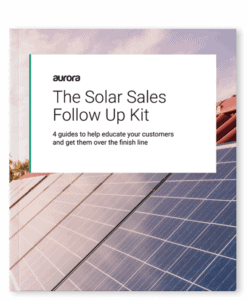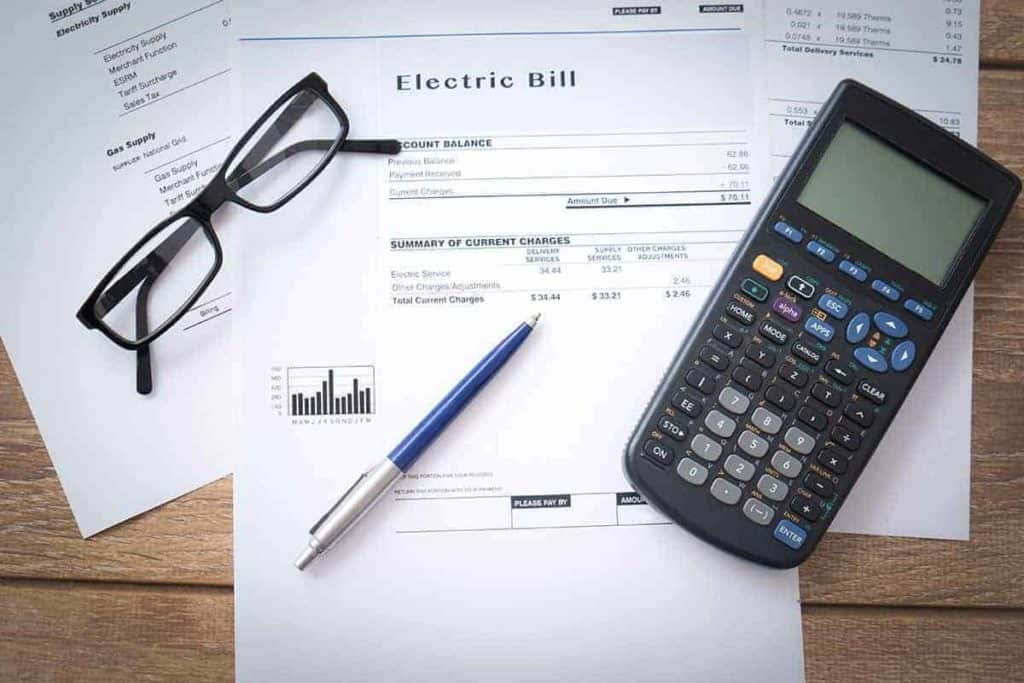
Of course, solar has huge benefits to homeowners. Benefits that cover that investment many times over, both in actual cash and in doing social good.
So, when we engage a potential customer it’s important that they understand all aspects of going solar, from how a system works all the way to how they’ll save money.
To keep customers engaged, and make sure they’re not overwhelmed by the process, follow-up is a key step. With that in mind, here are 4 common questions that your follow-up materials should answer to make sure that customer understands their options, the process, and how much they can save.
To help you answer these questions, and more, we’ve developed The Solar Sales Follow-up Kit. Check it out and give it to potential customers as a leave behind to help them learn more — and remember your business.
How much will they save?
We all know that the savings solar can provide are truly exceptional. At the same time, it seems as if utilities go out of their way to make electric bills confusing, masking what customers are truly paying now, and what their savings are once they install solar.
To overcome this, it’s critical that customers actually know how to read their electric bill. This is especially true if they are under TOU rates and have multiple line items for different times of the day.
They should also know how to read the bills they’ll get after panels are on the roof. This proactive step can eliminate some support calls and emails after an install is complete, as well as letting the customer know what to expect.
Check out The Solar Sales Follow-up Kit for some examples of how complex electric bills can be.
What’s involved in their install?
We take the solar panel installation process for granted, often completing multiple installs per week. But, this is likely the one, and only, solar install a homeowner will ever experience. And most have never even heard of an inverter.
You can help put their mind at ease by educating them on what’s actually involved in the process, step-by-step.
For example, many homeowners envision a painful, days-long process [Editor: raises hand], when in reality, many installers are on the roof for just a single day.
In fact, in our homeowner research, Decoding the Solar Buyer, we found that many homeowners expect to see a detailed breakdown of the components and costs of their system, similar to how they would when getting a car or house repair.
The Solar Sales Follow-up Kit describes the individual parts of a solar system, how it’s designed, and how it goes up on the roof. This information can set customers’ minds at ease and eliminate one potential pain point of closing the sale.
Do they need storage?
Solar + storage is gaining in popularity, with more than 70% of installers offering it as an option for customers. Customers, on the other hand, may not have realistic expectations of what it is and what it can provide.
Right now, the biggest selling points are around energy resiliency, i.e. being able to power your home (or at least crucial parts of it) during those times when the power is out.
The Solar Sales Follow-up Kit has the information potential customers need on what storage is (and isn’t), its pricing, and how it fits into a solar install.
What’s their payback period?
The payback period is what a large majority of customers want to know. They’re making a big investment, and want to know when they’ll start generating returns.
This is also an opportunity to educate customers on just what exactly goes into the costs of their system, including things like permitting and taxes.
This is perhaps the most effective way to sell a system. When you can detail for a customer (or the customer can easily figure out for themself) that, for example, their $10,000 investment in solar today will pay for itself in less than 7 years, and produce over $27,000 in savings over the lifetime of the system, the sale becomes that much easier.
The Solar Sales Follow-up Kit provides that information, including two key equations that every homeowner should understand: simple payback period and net revenue.
The Solar Sales Follow-up Kit
The Solar Sales Follow-up Kit can help you answer these questions — and many more — for your potential customers. This easy-to-share PDF is the perfect addition to your homeowner follow-up efforts.
By becoming a trusted advisor, not just one more estimate they have to go through, you’ll put yourself in position to close more deals.
Featured image by Van Tay Media.


